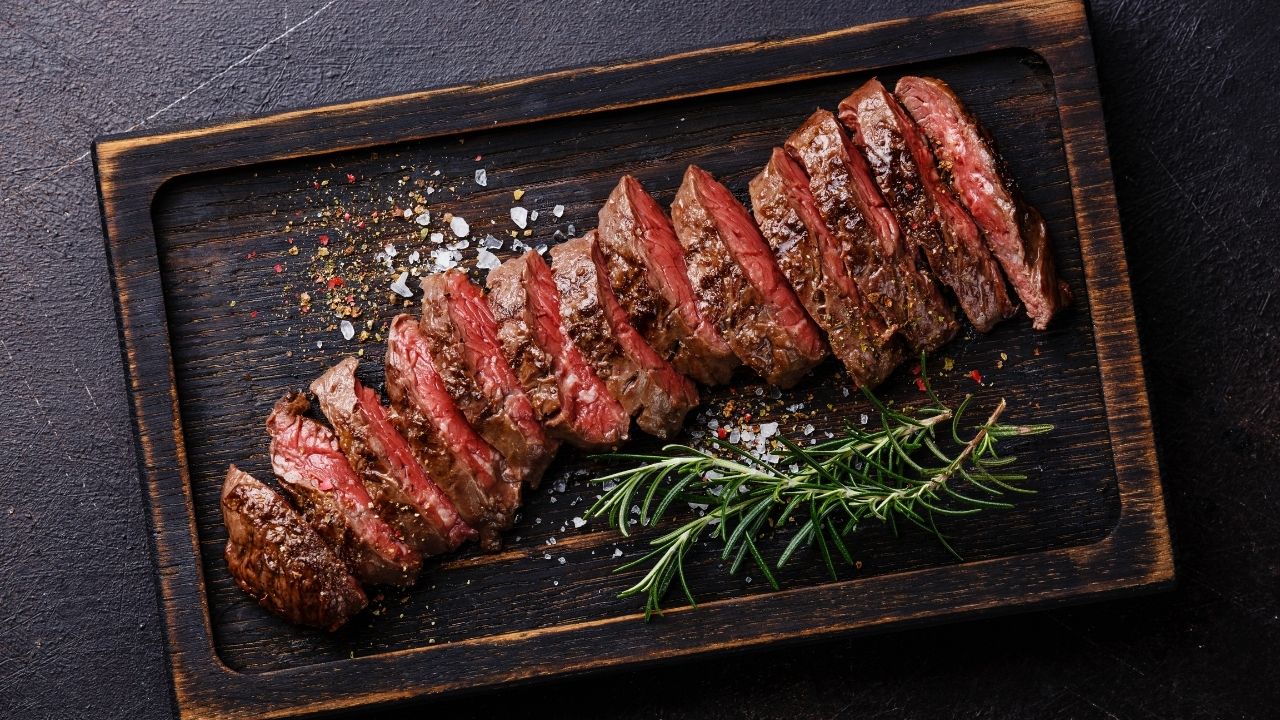Think about this now: succulent, tender, and juicy hand cut beef with a dash of rosemary, served with pickled vegetables. This will make the steak want to do a little dance in your mouth! The smell alone might make you faint! In order to pioneer into an exceptional steak maker, preparations have to be made and specific steps need to be followed. Learn these steps and you will have everything it takes to create a delicious steak meal tonight!
How Aging Beef Works
The prime step in rustling up a moreish steak, is that of aging beef. Beef aging does not pertain to the age of the cattle but instead refers to the amount of time the meat has been stored and refrigerated after slaughter. Aging beef involves storing meat at refrigerated temperatures to enhance tenderness and flavor.
Fresh beef consists of muscle fibers held together by collagen. The natural collagen is what causes a steak to toughen during the cooking process. To prevent this toughening, select cuts of beef with abundant marbling are aged. During the aging process, natural enzymes cause the collagen to break down. As the collagen breaks down, it melts away leaving only the tender meat fibers. The water in the steak is evaporated during the aging process but the entire flavor remains intact – resulting in a more concentrated flavor within the aged steak.
How Long Should Beef Be Aged?
There is a need to keep a close inspection to the amount of time the beef is being aged, as it is supposed to be removed from the aging environment when the desired age is accomplished. There are mainly two types of aging processes. The first being dry aging. In this process, whole sides of beef or primal cuts are hung in open air at a temperature just above freezing and left to age for several weeks. Not only are the enzymes working on the muscle tissues during this time, but the meat is also slowly dehydrating. This concentrates the meat and changes the texture and flavor. Although you lose quite a bit of meat in this process, it results in a soft textured meat with intense luscious flour.
The second process is that of wet aging, which includes storing meat in sealed airtight bags under refrigeration (32°F to 34°F) up to 3 weeks to retain moisture. This result is traditional beef flavor and is the most common aging method. Noteworthy is the fact that the same principle applies to the breakdown of enzymes of the connective tissue within the beef to increase tenderness. Wet-aging is a relatively recent technique that developed along with advances in plastics and refrigeration.
Most of the meat you buy in the store has almost definitely been wet-aged, unless expressly stated that it has undergone the process of dry aging. Undoubtedly, dry aged meat is difficult to find and can sometimes be a little pricier in comparison to wet-aged meat. It cannot be contemplated exclusively which type of beef is better, since both have their own distinct flavors. Dry-aged beef can be described as having a roasted, nutty flavor, while wet-aged beef can taste slightly metallic and lacks the same depth of flavor.
Final Thoughts
Statistics have shown that the U.S. consumption of beef amounted to 27.3 billion pounds in 2019. Such high levels of beef consumption patently exhibit that there are many steak lovers out there who like to relish the pleasures of tempting beef cuts.
Founded in 1865, Chicago Steak Company is one of the finest steakhouses in the county, and they have been carrying out their tradition of specializing in hand-cut, Midwest raised, USDA Prime beef. They offer both wet-aged and dry-aged steaks using aging techniques that go back generations. With the largest Dry Aging Facility in the Midwest, they have mastered a unique flavor profile that is second to none and are the leaders in dry aging beef nationwide. Furthermore, they have been able to provide a safe, contact free method of delivery during the COVID-19 pandemic.

